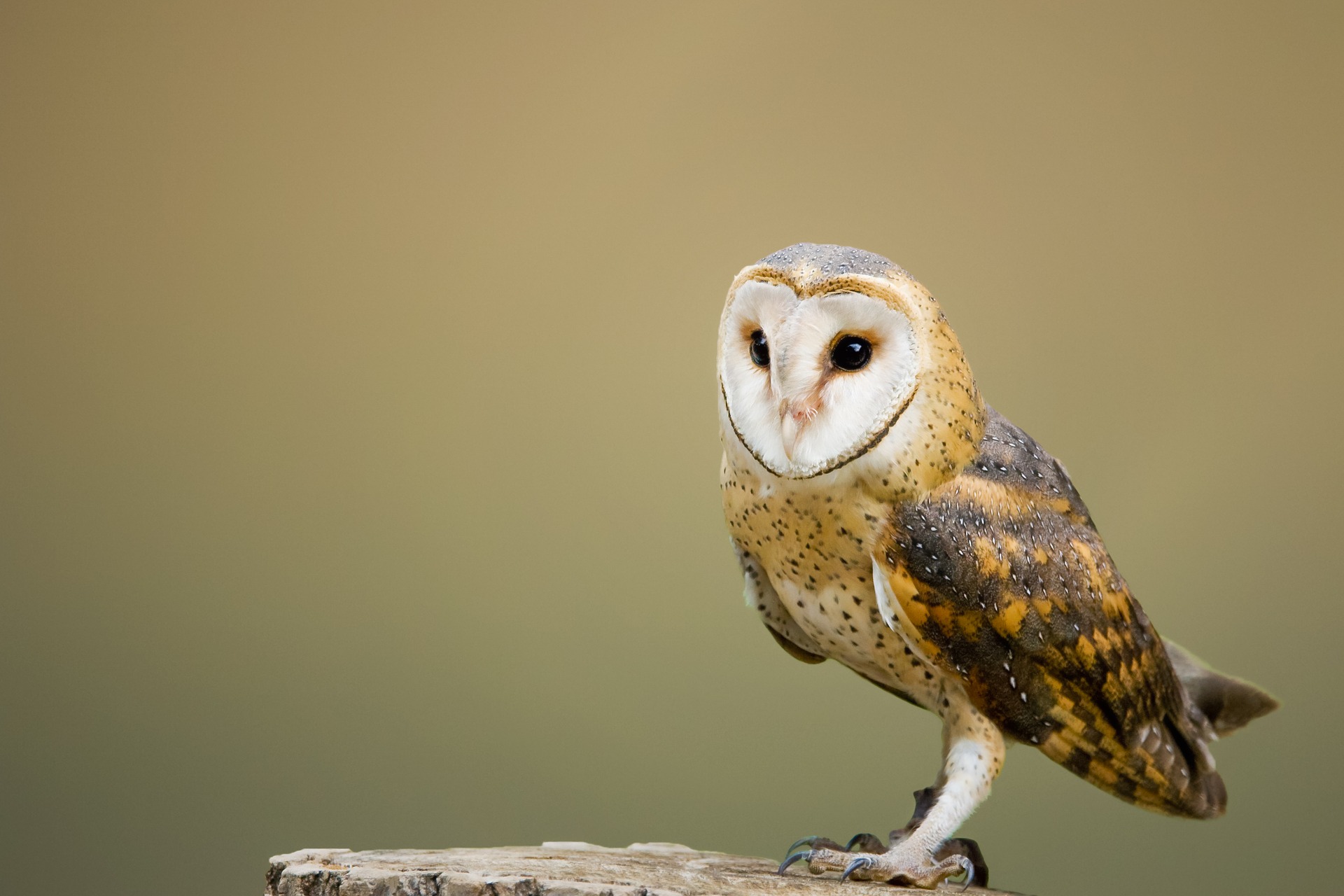
A Barn Owl is a fun bird to see while bird watching. Below are some tips to help you identify Barn Owls. We have also put together a list of fun Barn Owl T-shirts, Barn Owl bird patches, birdhouses, bird feeders, binoculars, stickers, and other fun bird-watching items.
About Barn Owls
It is strictly a nocturnal animal found in North America and considered a superstitious bird. They are silent predators of the night and remain silent and hidden during the day. They commonly roost in hidden quiet places. Despite their presence in almost all regions in the world, their numbers are declining due to the loss of their habitats.
Barn Owl Color Pattern
The Barn Owl has a ghostly lanky looking white face. It has an upper buffy part including its head while the chest and belly are also white in color. The wings and back are golden-brown with specks of ash grey towards the upper side.
Description and Identification
The different species of Barn Owls vary in appearance but they are generally pale in color with a distinct heart-shaped face. Their size also shows significant differences around the globe with some subspecies having wingspans that can measure up to 41 inches. The slanted black eye slits and the ridged feathers over the beak of the bird give it a mask-like appearance. The feathers can be rich brown or pale grey with or without speckles and patterns. Their large talons are dark black while their feathered legs may be pink or grey. The males of the species tend to be relatively smaller than the females and also have fewer spots. The hatched nestlings are usually entirely white and develop their coloration at a later stage.
Barn Owl Size
They are fairly large birds weighing between 430-620 grams. The bird has long wings spanning between 80 and 105 centimeters. A typical specimen measures about 33 to 39 centimeters in length.

Barn Owl Behavior
Bird watching for the Barn Owl may be a difficult endeavor as the bird is nocturnal. During the day, it roosts in quiet places and when disturbed by other day birds, their nature is to escape rather than stay and fight. To locate them, one needs to listen to their eerie, raspy calls at night as they are generally quiet animals. They fly low over open ground to seek out their prey by watching and listening.
Barn Owl Diet
Barn Owls have a carnivorous diet that can consist of a wide range of different prey animals and birds. The owls in wetter climates have a diet that is largely made of small mammals like shrews and rats while in dry barren areas they feed on reptiles and insects. They even prey on other winged creatures like bats and small birds. They even store excess food in their roosting sites for later consumption. They use a keen sense of hearing to spot and catch their prey. They act as effective pest control in farmlands as they control the mice population.
The Barn Owl prefers rodents such as voles. They also feed on mice, rats, and young rabbits. They would rarely venture into eating fish, lizards, frogs, and a small number of birds. Since it feeds during the night, the bird has great visibility in low light while their hearing is more precise.
Barn Owl Habitat
Barn Owls forage in a small territory close to their roosting site. Their hunting grounds are predominantly found over rough grassy pastures and the edges of woodlands. These Owls nest in open spaces like grasslands and farms. In some regions, they are known to populate areas that are high at 3000 meters in altitude.
The bird prefers open and semi-open country lowlands available in woodlands, grooves, farms, barns, and sometimes cities. The Owl may nest in a forest or a city if it is near food. Essentially, if it’s near farmland, marsh, or prairie.
Range and Migration
The Barn Owl ranges all across the globe with large populations found in every continent except Antarctica. They are primarily sedentary and individual birds tend to occupy a small set-territory which they only leave if there’s a scarcity of food. In continental Europe, they have been known to travel long distances from their place of birth to forage and search for mates. In some places such as the Australian continent, they have extended migrations which might be motivated by a nomadic search for food in drier seasons. They have also been recorded to travel across small patches of oceans to get to islands like New Zealand.
Nesting
Barn Owls nest in cavities that can be found on the sides of cliffs or in tree barks. They can also occupy nests built and abandoned by other birds that are large enough to suit them. In places with houses, they tend to lay their eggs in old buildings, especially in colder wetter climates. They prefer to nest in trees that are tall and away from heavily wooded areas. The owls don’t line their nests with any excess material and the females rely on their own body heat and excrement to keep their eggs warm. Often, other birds are also known to share the nesting spaces with the owls.
Barn Owl Lifecycle
A female Barn Owl lays 3-8 eggs which remain in incubation for 29-34 days. 55-65 days later, the young ones are ready for the first flight and hunting. An average Barn Owl will live for 4 years as its full lifespan.
Ornithology
Bird Watching Academy & Camp Subscription Boxes
At the Bird Watching Academy & Camp we help kids, youth, and adults get excited and involved in bird watching. We have several monthly subscription boxes that you can subscribe to. Our monthly subscription boxes help kids, youth, and adults learn about birds, bird watching, and bird conservation.
- Kids Bird Watching Monthly Subscription$10.00 / month
- Kid & Adult Bird Watching Starter Pack Subscription$10.00 / month and a $72.00 sign-up fee
- Kids Bird Watching Starter Pack Subscription$10.00 / month and a $19.00 sign-up fee
Bird Watching Binoculars for Identifying Barn Owls
The most common types of bird watching binoculars for viewing Barn Owls are 8×21 binoculars and 10×42 binoculars. Bird Watching Academy & Camp sells really nice 8×21 binoculars and 10×42 binoculars. You can view and purchase them here.
- Birding Binoculars$49.99
- Kids Binoculars$13.99
Barn Owl Stickers
Stickers are a great way for you to display your love for bird watching and the Barn Owl. We sell a monthly subscription sticker pack. The sticker packs have 12 bird stickers. These sticker packs will help your kids learn new birds every month.
Bird Feeders For Barn Owl
There are many types of bird feeders. Bird feeders are a great addition to your backyard. Bird feeders will increase the chances of attracting birds drastically. Both kids and adults will have a great time watching birds eat at these bird feeders. There are a wide variety of bird feeders on the market and it is important to find the best fit for you and your backyard.
Best Bird Houses for Barn Owl
There are many types of bird houses. Building a bird house is always fun but can be frustrating. These 4 bird houses have become our favorites. Getting a bird house for kids to watch birds grow is always fun. We spent a little extra money on these bird houses but they have been worth the higher price and look great.





















